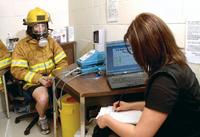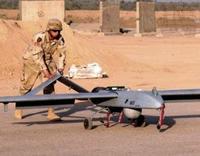-
K-9 units outfitted with GPS collars
Thanks to new GPS collars, Michigan State police officers are now able to keep track of their canine partners and locate them or their handlers if they become lost or injured
-
-
Dogs of war: the role of canines in the Second World War
A new book examines how dogs were used by the U.S. and Japanese militaries during the Second World War; the book goes beyond the battlefield duties of these four-legged soldiers and captures how dogs like New York City’s “Skippy” and Tokyo’s “Aren” mobilized their people to their nations’ causes
-
-
Chicago emergency officials preparing for harsh winter

As Chicago braces for an especially brutal winter, the Cook County Department of Homeland Security and Emergency Management is doing its best to prepare residents, emergency responders, and work crews for the worst weather in the nation
-
-
Autonomous deployment vehicles in flight tests
The Autonomous Deployment Demonstration (ADD) program has successfully completed flight tests; the ADD concept is to enable small unmanned air vehicles (UAV) equipped with sensor payloads to be launched from aircraft (manned or unmanned), balloons, or precision guided munitions, and dispersed in selectable patterns around designated areas
-
-
New Jersey teams with Target for disaster response
During the next major disaster, New Jersey emergency responders will receive assistance from the big box retailer Target; last week the company announced that it had officially teamed up with New Jersey’s Office of Homeland Security and Preparedness to assist state and local officials in the event of a major disaster or terrorist attack
-
-
NFL implements enhanced security procedures, fans grumble
Football fans across the country are now being subjected to additional security measures before they are allowed to enter a stadium to watch their team play
-
-
Protecting first responders from a quiet killer

Emergency responders in Flagstaff, Gilbert, and Chandler, Arizona recently underwent a battery of medical tests to help minimize the risk of having a stroke or heart attack while in the line of duty; 44 percent of all firefighter deaths were the result of heart attacks, which is the leading killer of firefighters
-
-
DHS to equip border agents with new body armor
The Customs and Border Protection buys $48,629,750 worth of personal body armor from North Carolina-based KDH Defense systems
-
-
Encrypted police broadcasts sparks battle
With advances in technology it is now possible for ordinary citizens to cheaply and easily listen in on police broadcasts, which is why law enforcement agencies across the country are working to shield their communications systems
-
-
Raytheon tests smallest air-launched weapon in its portfolio

Unmanned vehicles continue to evolve, and defense contractors build munitions form them; Raytheon has completed captive carry tests of its Small Tactical Munition Phase II configuration, paving the way for flight tests
-
-
British law enforcement exploits flaw in iTunes to spy

British law enforcement agencies and Apple are coming under sharp criticism after it was discovered that authorities exploited a security flaw in iTunes to spy on individuals
-
-
Florida’s falling crime rate has experts puzzled
With unemployment at record highs and police departments struggling with budget cuts, the fact that Florida’s crime rate has fallen nearly 33 percent in the last decade has many experts puzzled
-
-
Sector Report for Tuesday, 29 November 2011: Law Enforcement Technology
This report contains the following stories.
Plus 1 additional story.
-
-
Texting 911 in emergencies
The Post Falls police department in Idaho is testing a new 911 system that would allow residents to report emergencies via text message or e-mail
-
-
LAPD named best counterterrorism squad
The Los Angeles Police Department’s (LAPD) Counter-Terrorism and Special Operations Bureau (CTSOB) recently received Government Security News’ highest honor for a division of its kind
-
More headlines
The long view
Why Ukraine’s AI Drones Aren’t a Breakthrough Yet
Machine vision, a form of AI, allows drones to identify and strike targets autonomously. The drones can’t be jammed, and they don’t need continuous monitoring by operators. Despite early hopes, the technology has not yet become a game-changing feature of Ukraine’s battlefield drones. But its time will come.
